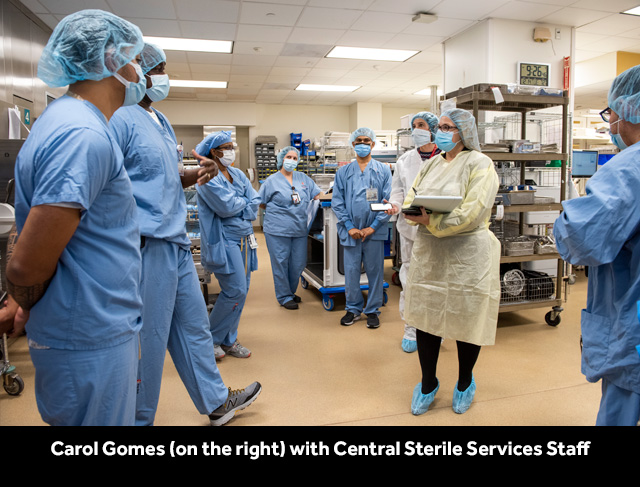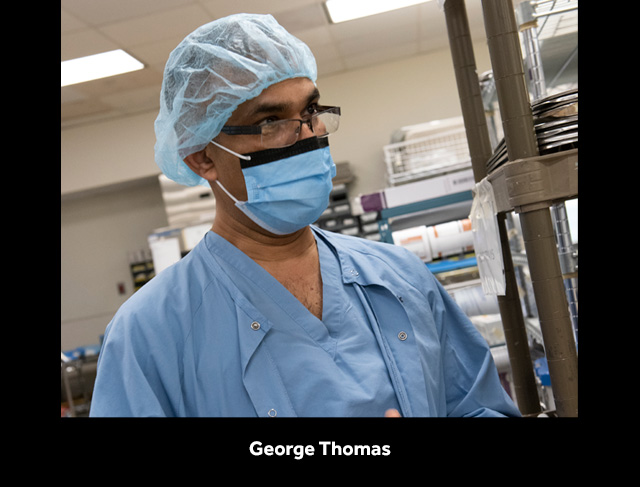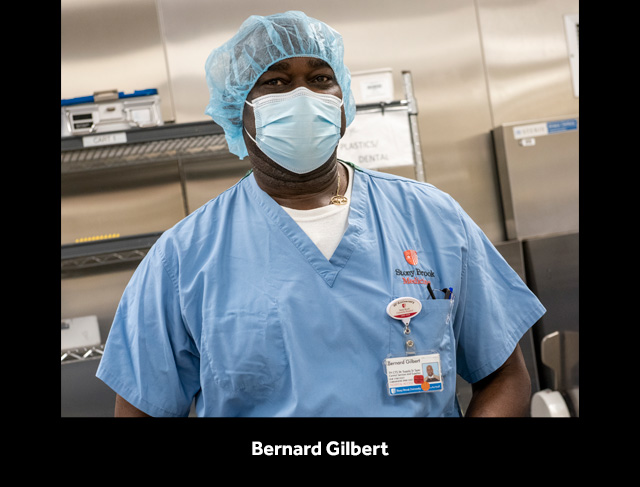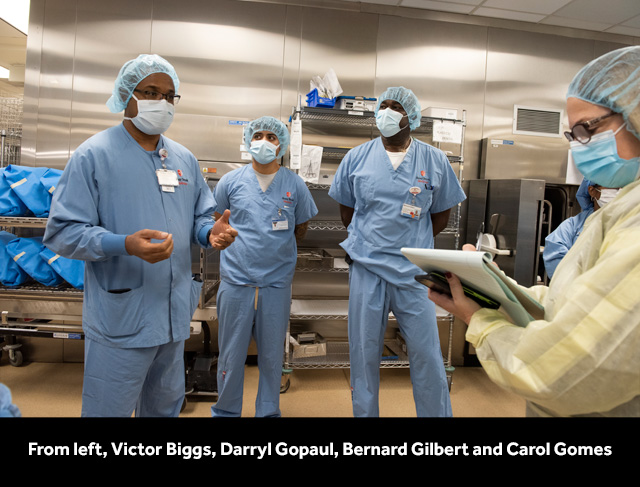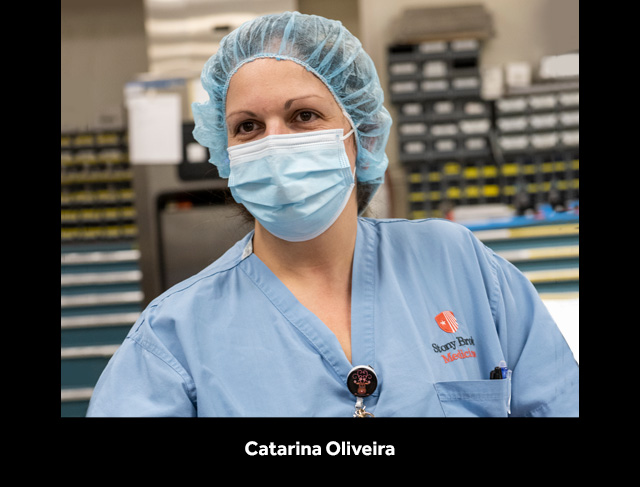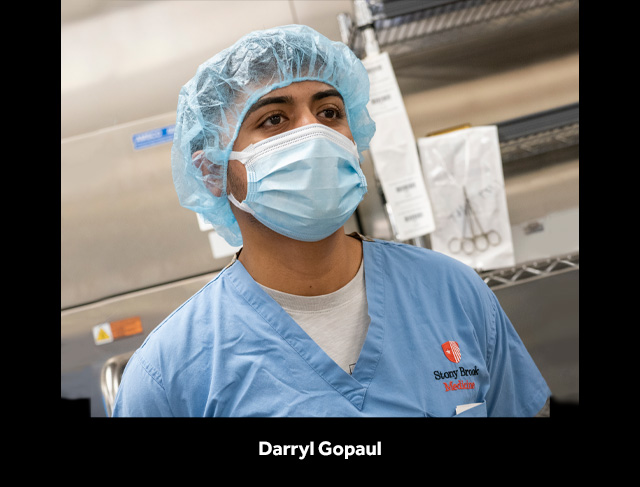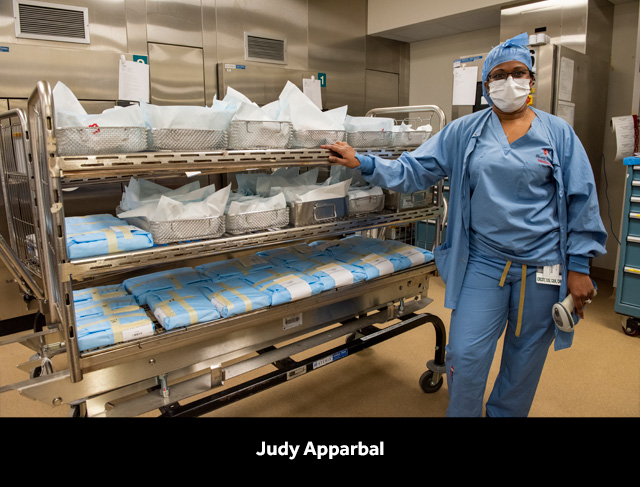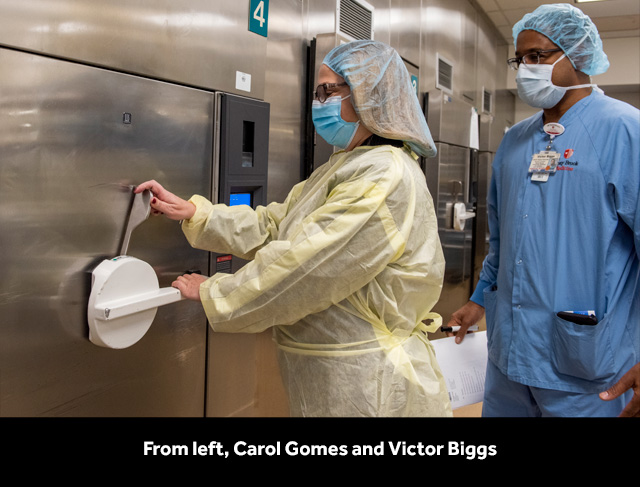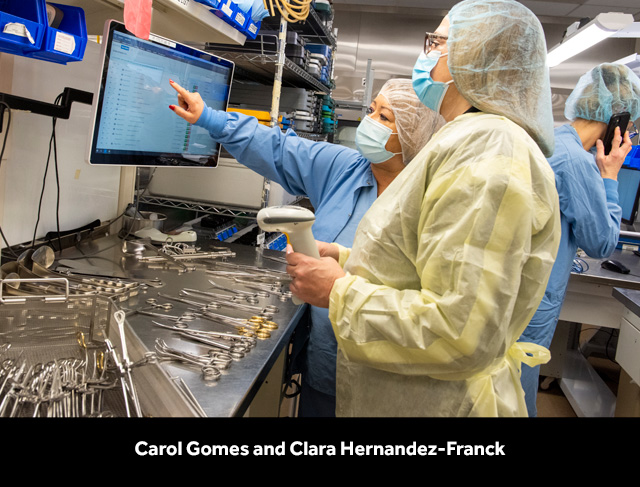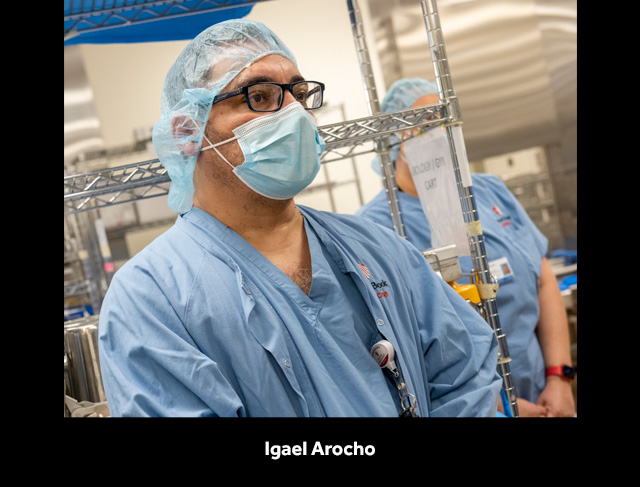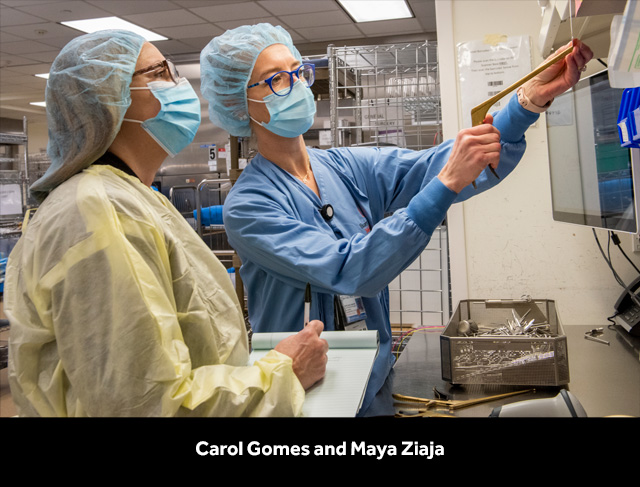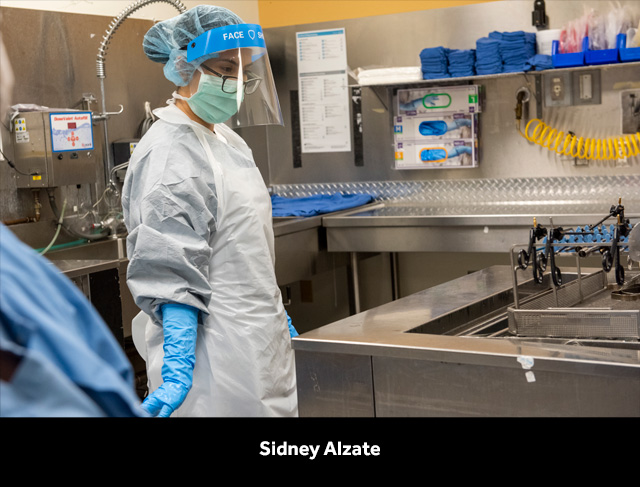Did you ever wonder what happens behind the scenes to prepare surgical instruments for our healthcare team who work in the operating room or procedural areas? Visiting with the Central Sterile team, I was able to experience firsthand how our technicians ensure that appropriate sterilization and disinfection procedures are applied for medical devices and equipment to keep our patients and staff safe.
The first noticeable characteristic, exhibited by the entire team, is the sense of pride bursting within the department for the high standards executed across the board. Over a decade ago, there was great opportunity for improvement, from the use of flash sterilization to ethylene oxide (ETO) use for instrument sterilization. With leadership direction from Ally Silver, Associate Director of Operations for Surgical Services, Lou Iaboni, the former Director for Central Sterile Services, and Bernard Gilbert, Director, the entire department implemented policy and procedure changes, reorganized workflow and transformed the department into a nationally recognized, award-winning department — not once, but twice!
From the moment I entered the work area, I was thoroughly engaged. Donned in a bunny suit and appropriate personal protective equipment, the team allowed me to visually inspect instruments using high-powered microscopic equipment, initiate a cycle to sterilize instruments and taught me how to pick instruments from a preference list for specific surgical cases using computerized algorithms. This hands-on approach allowed me to understand how the team works continuously to keep the department’s work in motion to support the operating room, procedural areas and outpatient departments.
Along the way, I was able to interact with many staff members who clearly enjoy their work at Stony Brook Medicine and contribute as vital team members to provide optimal care for our patients. George Thomas has been working in the Central Sterile Services (CSS) Department for more than 14 years. He expressed passion about supporting other members of the team and enjoys helping staff through training, including more recent hires.
Darryl Gopaul started working in CSS in October. He is responsible for case cart assembly and finds the work challenging and rewarding. On the day I visited the department, Darryl was expected to graduate the following weekend from Long Island University in Brooklyn from the Central Service Technology Program and was planning to take the Central Sterile Certification exam on his graduation day.
With the exception of staff grandfathered in, all new hires are expected to pass a certification exam within 18 months of being hired. As I scanned the team assembled around me, I couldn’t help but notice the sea of credentials the team proudly displayed on their badges: Certified Registered Central Service Technician (CRCST), Certified Instrument Specialist (CIS) and Certified Healthcare Leader (CHL), to name a few. Ninety-three percent of the staff working in Central Sterile have already passed the necessary exam.
Victor Biggs, one of the incredible managers, described his area of focus in the department on orthopaedic spine and bone services. He shared how the department works efficiently to prepare all of the scheduled cases in advance and noted that the team must always be ready for trauma cases and unexpected changes. He described responsibilities associated with case cart preparation, both for picking disposable items and assuring availability of in-house sterilized equipment and instrumentation.
We had an opportunity to walk through the well-organized “Pick Room,” where instrumentation is stored for specialty case carts. Victor noted how shift leaders, the OR and the CS technicians are in constant communication and collaborate extremely well to provide the necessary support for a fast-paced, demanding service.
Continuing through the tour, Maya Ziaja, another manager, described the challenges of cleaning flexible endoscopes and new sterilization and disinfection processes that no longer require ETO use, creating a more sustainable environment. In addition, it reduces the turnaround time to clean scopes from approximately 20 hours to 1 hour, allowing for swifter turnover of equipment and less need for large inventories. Maya also described how she tests specialized bone rongeurs, checking for sharpness of cuts using different layers of latex for different scissor-like instruments.
I also visited the decontamination area where the staff demonstrated the use of the clean elevator as case carts go up to the fourth floor, and the “dirty” elevator returns the case carts to the decontamination area. The team demonstrated the steps taken to spray down the equipment to ensure it is kept moist before the cleaning process and demonstrated how the carts and instruments are scanned to track each case. Sydney Alzate described how the case carts are sanitized at 130 degrees Fahrenheit, and how the team takes pride in recognizing that the work accomplished in this area is to prevent infections.
Clara Hernandez-Franck, dedicated unit educator, shared how she was working in Central Sterile when it first opened in 1979. She recalls a vast empty space as she unpacked the first boxes of supplies. Clara described how clinicians came down to CSS with the very first tray lists as she opened boxes and began dividing supplies by services so that staff was able to pick from the racks in an orderly fashion. Since those times, the department has grown exponentially, expanding to serve additional departments and outpatient areas.
Describing the atmosphere in CSS, Clara states that although there is much pressure working in an intense environment to support the operating rooms, the team enjoys each other’s company, and they have fun at work in the process. The 24/7 operation ensures full preparation for surgical procedures, and staff is always at the ready to support key functions. Clara noted that no matter what comes down the pike, the team is always up for the challenge, advocating for each other and the department, and preparing for the continued complexities of the work that comes their way as services grow and specialize.
Bernard Gilbert, Director for Central Sterile Services, explained how the department is fully committed to excellence, never compromising quality and continuously addressing the needs of patients and physicians requiring their services. And since my visit, I was thrilled to learn that Bernard was recently honored for his excellence in leadership, dedication and service in the sterile processing profession with the 2022 Central Service (CS) Leadership Award by the Healthcare Sterile Processing Association.
A special shout-out goes to Dr. James Nicholson who coordinates a tour for the orthopaedic residents to the Central Sterile Services department to teach residents about the importance of the work conducted in this department and how it can significantly impact the outcome of surgical procedures.
My favorite part of the visit involved the team teaching me how to pull instrumentation using a computerized preference card list by surgeon and case. The team reviewed the scanning CensiTrac system and how each instrument is identified and meticulously checked, as it is selected from the pick list. The level of knowledge and expertise imparted by those working in the department was nothing short of incredible.
This was quite a memorable Day in the Life. Every staff member was engaged and eager to share knowledge and information about the department. Most poignant, was how the staff fondly remembered Lou Iaboni, the former director of the department, who passed away last year. They stated that his memory lives on in how he led the team to success as a national leader in Central Sterile Services. The staff still continue to nurture and water the plants he left behind, to honor his legacy and memory as it made a lasting imprint on the entire team. His memory lives on as the spirit of excellence is fostered and enduring.
Carol


